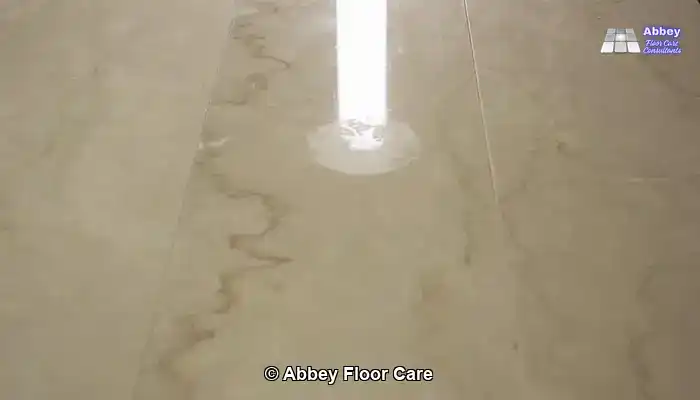Mould can spread alarmingly fast in your home after experiencing water damage, especially in spaces that have high humidity, insufficient ventilation, and minimal exposure to sunlight. This is a common challenge faced by many households across Australia, which can lead to expensive repairs if not dealt with swiftly. The first crucial step in safeguarding your home from extensive damage is recognizing the early indicators of mould growth and taking immediate action to reduce the associated risks. Understanding these signs can help protect your home and health.
Mould is not just an unsightly nuisance in our living spaces; it can also pose serious health risks, particularly for individuals with pre-existing respiratory conditions. It is crucial to comprehend how swiftly mould can proliferate when exposed to excess moisture. This awareness equips homeowners with the knowledge necessary to defend their properties against potential water damage and the various complications that can arise as a result. By being informed, you can take proactive measures to ensure a safe living environment.
This article provides essential insights into the rapid growth of mould following a water incident. We will examine the root causes behind this issue and detail actionable steps to take if you find yourself facing such a predicament. Join us as we investigate how quickly mould can develop after experiencing water damage and the measures you can implement to prevent it!

Effective Strategies for Detecting Mould Infestation in Your Living Space
Mould is a type of fungus that can easily invade your home if preventive actions are not taken. It typically appears as a slimy, unsightly growth in various colors, primarily green or black. These fungi flourish in damp environments, making areas impacted by water damage or those with high humidity levels prime candidates for mould growth. Understanding how to identify mould is crucial for maintaining a healthy living space.
Several noticeable signs indicate that mould has taken residence in your home.
- One of the most prominent signs is a musty odour, which often indicates that mould is growing in a concealed area, requiring immediate attention!
- Discoloration on walls or floors is another common symptom. Mould usually manifests in irregular patterns and may appear darker than the surrounding surfaces, which can be alarming.
- Be vigilant for any warping or bubbling of paint or wallpaper, as these can signal underlying water damage and the potential for mould growth.
If you notice any of these warning signs, it is imperative to seek professional assistance without delay. Experts can assess the situation and offer guidance on managing any existing mould effectively. Remember, acting promptly can save you significant time and money, making it far easier and more economical to prevent mould rather than eradicate it once it has established itself.
Understanding the Types of Water Damage That Encourage Mould Proliferation
While the threat of mould is significant, comprehending its causes is essential for effective prevention. By recognizing the various origins of water damage that lead to mould growth, you can take proactive steps to safeguard your living environment and maintain a healthy atmosphere. Awareness is the first line of defense against mould.
Several key factors contribute to mould growth after experiencing water damage. Even minor leaks can create the perfect conditions for mould spores to thrive. Areas with poor airflow or ventilation are also at a higher risk for mould proliferation. Additionally, damp locations such as crawl spaces or roof cavities with high humidity levels are particularly vulnerable to mould infestations.
The encouraging news is that straightforward measures can dramatically reduce the risk of severe mould problems. Regularly inspect your home for signs of moisture or water damage and strive to keep humidity levels low. Don’t wait for the situation to escalate—take proactive action now to protect your family’s health and maintain your peace of mind.
Examining Environmental Conditions That Promote Rapid Mould Proliferation
Now that we’ve established the link between water damage and mould growth, it’s crucial to understand just how quickly this can transpire. Awareness of the situation allows homeowners to take necessary precautions to maintain a healthy environment.
Under optimal conditions, mould can proliferate at an astonishing rate. Mould spores can colonize a damp surface in as little as 24 to 48 hours! This rapid expansion can have serious implications for both your health and the structural integrity of your property.
So, what conditions contribute to this swift mould proliferation? Mould requires specific factors to thrive, including:
- Moisture: Mould thrives in damp environments; thus, high humidity or wet surfaces create an ideal setting for its growth.
- Temperature: Most mould species flourish in warm temperatures ranging from 16 °C to 27 °C, although some can even survive at lower temperatures.
- Nutrients: Mould needs organic materials to survive, such as wood, paper, drywall, and fabrics commonly found in homes.
- Darkness: Mould can thrive in dark areas and does not need sunlight for growth, making poorly lit spaces especially vulnerable.
- Airflow: Insufficient ventilation can lead to elevated moisture levels, creating an environment conducive to mould growth.
- Time: Given the right conditions, mould can grow and spread rapidly, highlighting the importance of vigilance.
To effectively prevent mould growth, it is essential to manage moisture levels in your home, ensure proper ventilation, and consult skilled technicians to promptly address any water damage or leaks as they arise.
Effective Approaches for Mould Remediation and Long-Term Prevention
Now that we understand the risks associated with mould growth, let’s explore effective strategies for addressing and preventing it. The first step is to identify and remediate water damage as thoroughly as possible. This includes repairing leaky pipes, ensuring your gutters function correctly, and investigating other hidden sources of moisture that may contribute to mould growth.
Once you have resolved the immediate concerns, consider investing in a whirlybird installation or an air conditioning unit to maintain low humidity levels and prevent future mould growth. These systems can significantly improve air circulation and reduce moisture in your home, creating an inhospitable environment for mould.
Additionally, keep a vigilant eye on your home in the weeks following remediation. If you notice any early warning signs of mould re-emerging, don’t hesitate to consult a professional for advice. The sooner you address potential issues, the better! Ultimately, preventing mould from forming in the first place is far more effective than dealing with its aftermath.

The Importance of Professional Mould Inspection and Testing Services
If you are uncertain about the mould situation in your home, seeking professional assistance can provide invaluable peace of mind. Experts equipped with specialized knowledge and tools can quickly identify hidden mould growth, allowing you to tackle problems before they escalate into more significant issues. Timely intervention is crucial in preventing extensive damage.
What if mould has already established itself? Don’t worry—professional remediation services are available to assist in eliminating existing mould colonies. These experts utilize industrial-strength cleaners and advanced techniques to ensure your home is safe again, alleviating concerns about long-term damage and health risks. Many companies even offer free estimates for their services, so you can avoid unexpected costs and feel confident in your decisions.
If you suspect mould is lurking in your home, don’t delay in seeking professional help. Acting quickly could save you money and create a healthier, stress-free environment for you and your family!
Reliable Mould Remediation Services Provided by The Mould Removers
If you are facing a mould issue, it’s essential not to resort to a DIY approach. Instead, reach out to the skilled mould removal professionals at The Mould Removers. Their expertise in mould remediation guarantees not only effective removal but also ensures your safety throughout the process.
With their extensive knowledge and experience in mould removal services, you can rest assured that harmful mould colonies will not return anytime soon. Don’t hesitate—call now to address your mould concerns and reclaim the comfort of your home!
The Article: Mould Growth Speed After Water Damage: What to Know first appeared on https://writebuff.com.





You’ve raised some essential points about mould and its proliferation in homes, especially in the Australian context where humidity can often be quite high. The rapid spread of mould following water damage is something I’ve witnessed firsthand, particularly in older properties that may not have been constructed with modern building practices. Having lived in a suburb known for its damp terrain, I’ve learned that the consequences of mould extend far beyond unsightly patches on walls — they seep into our health, especially affecting those with asthma or other respiratory issues.
You’ve hit the nail on the head there. Mould isn’t just a pesky house guest that overstays its welcome; it’s the sort of visitor that makes itself at home in your lungs as well. I mean, if only it had a sense of decorum and chose to simply hang out on the edges of a lovely old wall rather than infiltrating our health.
This post highlights such an important issue that often goes unnoticed until it’s too late. I recently dealt with a minor leak in my bathroom, and it was eye-opening to see how quickly humidity could lead to those tell-tale black spots popping up. It really reinforced the necessity of staying vigilant, especially in spaces where moisture and poor ventilation converge, like kitchens and bathrooms.
It’s interesting how quickly small issues can escalate, isn’t it? A minor leak can create a perfect environment for mold if not addressed. Your experience highlights a critical aspect of home maintenance that isn’t always at the forefront of our minds.
You touched on such a crucial point with your experience. It’s surprising how something as seemingly minor as a leak can cascade into much bigger issues if left unchecked. The way moisture interacts with the environment in our homes often feels like an unseen battle until those black spots appear, reminding us just how quickly mildew can take hold.